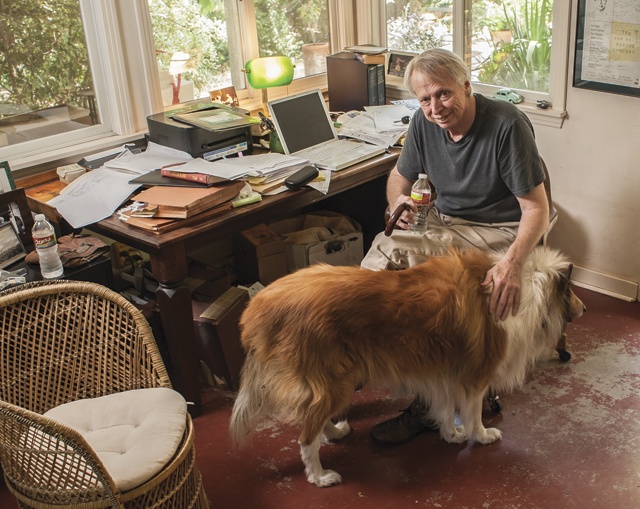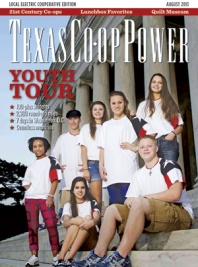I’m a writer.
At the age of 14, I started writing a novel on lined notebook paper. In 1959, a man named John Farris published a steamy novel about teenagers called “Harrison High.” It sold a million copies and is still in print. Rumor had it that Farris was a teenager when he wrote the novel, though he was 23 when it came out. I thought, I can do that! I wrote a couple of chapters in pencil, copied them in peacock blue ink, and illustrated them. That was the end of it. I was a teenager.
A year or so later a cousin gave me a copy of J.D. Salinger’s “Catcher in the Rye.” I gave it back, shocked by the profanity. I guess I thought it would be about a baseball player.
But when I was a college freshman, an English professor assigned my class Salinger’s novel; for the first time I stayed up all night reading a book. I had about as much in common with the novelist’s prep school runaway in New York as a broomstick pony had with Secretariat. But I was transfixed by the people sprung to life by images, comedy, dialogue.
Five years later, a gifted young writer named James Hoggard taught the first creative writing class on our small campus, and on seeing my first story, he sent me off with encouragement that I could be a writer. I thought it was going to be easy.
I moved to Dallas and got a job approving or canceling strangers’ car insurance policies. I suffered first love’s broken heart, and oh, I pitied myself. At night in my bitter blues, I tore through a novel about a lone wolf assassin. But I was trying to write like Salinger. I italicized loads of verbs and modifiers in the dialogue, trying to make sure readers heard the voices right.
A man was excited about the book and gave me a publishing contract. He did suggest that all those italicized verbs and adjectives were effete. I had to look up the word. I gave my masterpiece another hard and sobered look, and it was awful. I wish I still had those innocent lines in peacock blue, but I’m glad that typed manuscript with my name on it rode a garbage truck to its grave long ago.
I realized I hadn’t read enough to be a writer. So for two years I was a graduate student. I sent short stories to literary quarterlies; my favorite note of rejection: “This has a pleasing disorganization but of course you intended that.” Disorganized? And now I had two degrees that prepared me for no workplace.
I had an audition at a now defunct newspaper in Fort Worth. A grimy weekend editor gave me a fact sheet about a suspicious corpse found in a river bottom and told me to write a news story in 15 minutes on a typewriter that didn’t have a “J” key. I walked out humiliated. I had never taken a journalism class and had no idea how to be a reporter. I started learning the craft in humble jobs with small-town newspapers.
The early ’70s were the heyday of the New Journalism, as branded by Tom Wolfe. He proposed that stylish magazine writing, such as his own, spelled the death of the novel. (He later got off his high horse and became a novelist.)
Just as I got a fine new job at the New Braunfels Herald-Zeitung, our state gained an ambitious variant on the New Journalism formula, and as a freelancer I lucked into Texas Monthly’s ground floor. My fourth article published in the magazine’s first year spawned my hurried first book about Willie Nelson, Armadillo World Headquarters and the cosmic cowboy craze.
I gave the hybrid sound a Tom Wolfe-like brand, “redneck rock,” which annoyed some musicians. But you get to count the terms you’ve coined, and that’s the only one in my purse.
I decided if I was going to be the kind of writer I aspired to be, I had to make the leap of faith, so I quit my job with few dollars to my name. Two breaks came along. I broke a rousing story about a jailbreak of Americans in Piedras Negras, Coahuila, and felt at last I was a real reporter, for the truth behind the international incident had been locked up so tight.
Some generous folks gave me a six-month fellowship on J. Frank Dobie’s old Paisano Ranch. There I learned essentials of routine and rhythm. I had never known I am a morning person. I wrote half a draft of a novel there and gave my barely disguised hometown and the book an Indian name. When I drove away with my collie, I had no idea seven years would pass before it came out.
Since then, I’ve squired about 150 articles and essays into a score of publications, some read throughout the country. I’ve put my name on 12 books, and books are a writer’s marks on the wall—Kilroy was here. Though I started out to be a novelist, just two of my books are fiction. The second one, a recasting of the end of the Comanche wars in Texas, consumed 25 years, off and on. Was that rational?
But what keeps drawing me back to fiction is that some days, though not often enough, characters start doing and saying things you didn’t know they would. One day when my wife and I had paused on a long overlook in Big Bend, an Apache woman stepped out of the confusion in my mind and showed me how the book could end. The feeling is sublime.
No less rewarding, in another way, was the next one, a biography of Gov. Ann Richards. My journalistic path had never given me much chance to write about women. In what other livelihood could I have roamed Manhattan with George Foreman, after he regained the heavyweight title at 48, and listened to his tales about Liston, Frazier and Ali?
Some months ago I took my car to a friendly mechanic whose skill and labor I hadn’t needed in a while. He said, “I haven’t seen you in 10 years.”
“I’m glad you’re still open,” I replied, shaking hands.
“So how are you enjoying your retirement?”
I laughed. “I’m not retired. I couldn’t retire if I wanted to.”
He cocked his head and said, “What do you do for a living?”
“I’m a writer.”
He laughed and cried, “Why, man, that’s not workin’!”
——————–
Jan Reid is an Austin writer.


